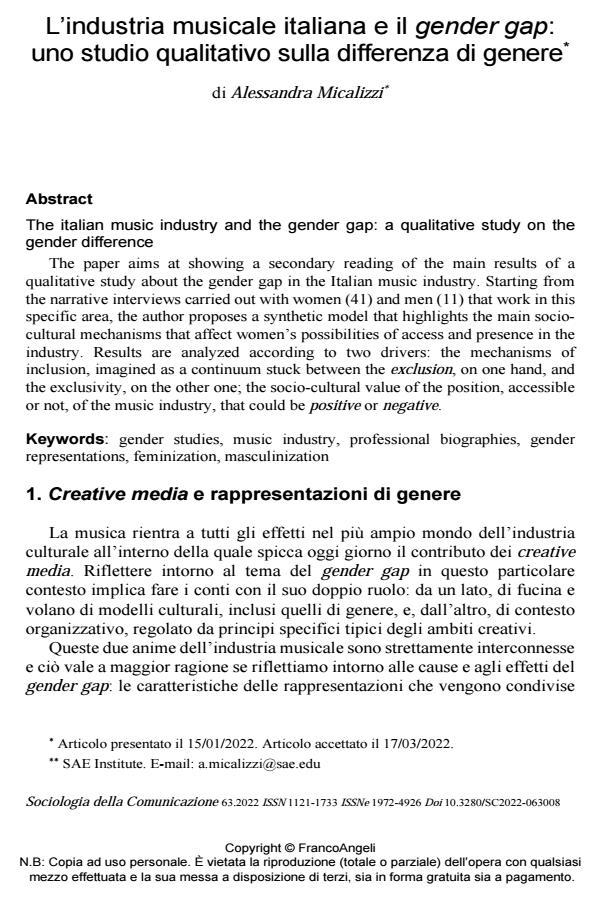The italian music industry and the gender gap: a qualitative study on the gender difference
Journal title SOCIOLOGIA DELLA COMUNICAZIONE
Author/s Alessandra Micalizzi
Publishing Year 2022 Issue 2022/63
Language Italian Pages 19 P. 133-151 File size 321 KB
DOI 10.3280/SC2022-063008
DOI is like a bar code for intellectual property: to have more infomation
click here
Below, you can see the article first page
If you want to buy this article in PDF format, you can do it, following the instructions to buy download credits

FrancoAngeli is member of Publishers International Linking Association, Inc (PILA), a not-for-profit association which run the CrossRef service enabling links to and from online scholarly content.
The paper aims at showing a secondary reading of the main results of a qualitative study about the gender gap in the Italian music industry. Starting from the narrative interviews carried out with women (41) and men (11) that work in this specific area, the author proposes a synthetic model that highlights the main socio-cultural mechanisms that affect women’s possibilities of access and presence in the industry. Results are analyzed according to two drivers: the mechanisms of inclusion, imagined as a continuum stuck between the exclusion, on one hand, and the exclusivity, on the other one; the socio-cultural value of the position, accessible or not, of the music industry, that could be positive or negative.
Keywords: gender studies, music industry, professional biographies, gender representations, feminization, masculinization
Alessandra Micalizzi, L’industria musicale italiana e il gender gap: uno studio qualitativo sulla differenza di genere in "SOCIOLOGIA DELLA COMUNICAZIONE " 63/2022, pp 133-151, DOI: 10.3280/SC2022-063008